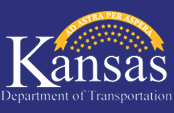BICYCLING STATUTES
(Kansas Statutes Annotated)
8-1405. "Bicycle" defined.
" Bicycle" means every device propelled by human power upon which any person may ride, having two (2) tandem wheels, either of which is more than fourteen (14) inches in diameter.
History: L. 1974, ch. 33, � 8-1405; July. 1.
8-1586. Unlawful acts; application of regulations.
(c) The provisions of K.S.A. 8-1587 to 8-1592, inclusive, which are applicable to bicycles, shall apply whenever a bicycle is operated upon any highway or upon any path set aside for the exclusive use of bicycles, subject to those exceptions stated herein.
History: L. 1974, ch. 33, � 8-1586; L. 1975, ch. 39, � 14; L. 1984, ch. 39, � 10; Jan. 1, 1985.
8-1587. Traffic laws apply to persons riding bicycles. (All traffic laws apply to bicyclists.)
Every person riding a bicycle upon a roadway shall be granted all of the rights and shall be subject to all of the duties applicable to the driver of a vehicle by this act, except as otherwise provided in K.S.A. 8-1586 to 8-1592, inclusive, and except as to those provisions of this act which by their nature can have no application.
History: L. 1974, ch. 33, � 8-1587; L. 1975, ch. 39, � 15; April 19.
8-1588. Riding on bicycles.
(Limitations specified on the number of riders per bicycle) (a) A person propelling a bicycle shall not ride other than upon or astride a permanent and regular seat attached thereto.
(b) No bicycle shall be used to carry more persons at one time than the number for which it is designed and equipped.
History: L. 1974, ch. 33, � 8-1588; July 1.
8-1589. Same; clinging to other vehicles prohibited.
(Bicyclists cannot cling to motor vehicles)
No person riding upon any bicycle, coaster, roller skates, sled or toy vehicle shall attach the same, himself or herself to any vehicle upon a roadway.
History: L. 1974, ch. 33, � 8-1589; July 1.
8-1590. Riding on bicycles or mopeds; riding on roadways and bicycle paths.
(Bicyclists must ride to the right)
(a) Every person operating a bicycle or a moped upon a roadway at less than the normal speed of traffic at the time and place and under the conditions then existing shall ride as near to the right side of the roadway as practicable, except under any of the following situations when: (1) Overtaking and passing another bicycle or vehicle proceeding in the same direction; (2) preparing for a left turn at an intersection or into a private road or driveway; or (3) reasonably necessary to avoid conditions including, but not limited to, fixed or moving objects, parked or moving bicycles, bicycles, pedestrians, animals, surface hazards or narrow width lanes that make it unsafe to continue along the right-hand edge of the roadway.
(b) Any person operating a bicycle or a moped upon a one-way highway with two or more marked traffic lanes may ride as near to the left side of the roadway as practicable.
(c) Persons riding bicycles upon a roadway shall not ride more than two abreast, except on paths or parts of roadways set aside for the exclusive use of bicycles.
(d) Wherever a usable path for bicycles has been provided adjacent to a roadway, bicycle riders shall use such path and shall not use the roadway.
(e) For purposes of this section, "narrow width lane" means a lane that is too narrow for a bicycle and a vehicle to travel safely side-by-side within the lane.
History: L. 1974, ch. 33, � 8-1590; L. 1995, ch. 188, � 7; July 1.
8-1591. Same; carrying articles.
(One hand must always be on the bicycle handlebars)
No person operating a bicycle shall carry any package, bundle or article which prevents the driver from keeping at least one (1) hand upon the handlebars.
History: L. 1974, ch. 33, � 8-1591; July 1.
8-1592. Lamps, brakes and other equipment on bicycles. (Light/lamp visibility specifications)
(a) Every bicycle when in use at nighttime shall be equipped with a lamp on the front which shall emit a white light visible from a distance of at least five hundred (500) feet to the front and with a red reflector on the rear of a type approved by the secretary of transportation which shall be visible from all distances from one hundred (100) feet to six hundred (600) feet to the rear when directly in front of lawful lower beams of head lamps on a motor vehicle. A lamp emitting a red light visible from a distance of five hundred (500) feet to the rear may be used in addition to the red reflector.
(b) Every bicycle shall be equipped with a brake which will enable the operator to make the braked wheels skid on dry, level, clean pavement.
(c) No person shall sell a pedal for use on a bicycle, unless such pedal is equipped with a reflector of a type approved by the secretary of transportation which is visible from the front and rear of the bicycle to which it is attached during darkness from a distance of two hundred (200) feet, and no person shall sell a new bicycle, unless it is equipped with pedals meeting the requirements of this subsection.
History: L. 1974, ch. 33, � 8-1592; L. 1975, ch. 427, � 29; Aug. 15.
8-1592a. Application of 8-1586 to 8-1592 to motorized bicycles.
The provisions of K.S.A. 8-1586 to 8-1592, inclusive, shall be applicable to motorized bicycles, and every person operating a motorized bicycle shall be subject to the provisions thereof.
History: L. 1976, ch. 42, � 6; Jan. 1, 1977.
8-1592b. Low power cycles; traffic law application; no registration or driver's license required. Vehicle registration and driver's license shall not be required for operation of a low power cycle. Traffic regulations applicable to bicycles shall apply to low power cycles except tricycles with no brake horsepower.
History: L. 1980, ch. 42, � 4; July 1

